
Rick Dangerous is a platform game developed by Core Design for the Acorn Archimedes, Amiga, Atari ST, Amstrad CPC, ZX Spectrum, Commodore 64, and MS-DOS. The game was released in 1989 and published by MicroProse on the Firebird Software label in the UK, and on the MicroPlay label in America. It was also published in Spain by Erbe Software. Later, it was released with two other games, Stunt Car Racer and MicroProse Soccer, on the Commodore 64 Powerplay 64 cartridge. The game was followed by a sequel, Rick Dangerous 2, in 1990. Loosely based on the Indiana Jones film franchise, the game received mixed reviews from critics.

Barbarian: The Ultimate Warrior is a 1987 video game developed and published by Palace Software for the Amstrad CPC, Commodore 64, and ZX Spectrum. The game was ported to many other systems and was licensed to Epyx who published it as Death Sword in the United States.
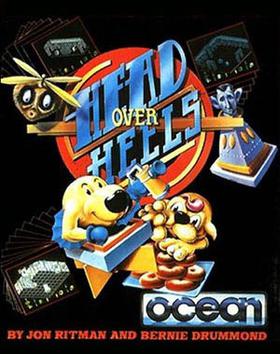
Head Over Heels is an action-adventure video game released by Ocean Software in 1987 for several 8-bit home computers. It uses an isometric engine that is similar to the Filmation technique first developed by Ultimate Play the Game.

Aaargh! is a single-player action video game in which the player controls a giant monster with the goal of obtaining eggs by destroying buildings in different cities across a lost island. It was designed for Mastertronic's Arcadia Systems, an arcade machine based on the custom hardware of the Amiga, and was released in 1987. It was ported to a range of other platforms and released on these across 1988 and 1989. Electronic Arts distributed the Amiga version of the game.

Pentagram is a ZX Spectrum and MSX video game released by Ultimate Play the Game in 1986. It is the fourth in the Sabreman series, following on from his adventures in Sabre Wulf, Underwurlde and Knight Lore. Similarly to Knight Lore it uses the isometric Filmation engine. The game was written by either Tim and Chris Stamper or a U.S. Gold programming team.
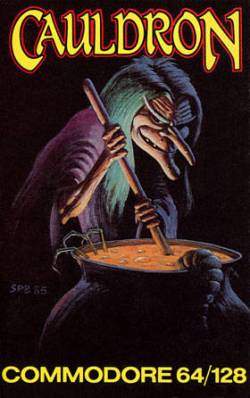
Cauldron is a video game developed and published by British developer Palace Software in 1985 for the ZX Spectrum, Commodore 64, and Amstrad CPC home computer. It contains both platform game and horizontally scrolling shooter sections. Players control a witch who aims to become the "Witch Queen" by defeating the "Pumpking"

Starfox is a video game published by Ariolasoft on their Reaktor label in 1987 for the ZX Spectrum, Commodore 64, and Amstrad CPC. The player assumes the role of Hawkins, a space fighter pilot charged with protecting the Hyturian star system from invading alien forces. The game uses wireframe and shaded vector graphics to depict combat, in a similar fashion to games such as Elite and Starstrike 2, which were also created by Realtime Games. Ariolasoft had previously published the Electronic Arts titles Skyfox and Arcticfox and the name was chosen to build on the success of those titles. The US Commodore 64 release was titled The Rubicon Alliance.

Cobra is a 1986 platform game based on the film of the same name. It was developed and published by Ocean Software, and was released in Europe for Amstrad CPC, Commodore 64 (C64), and ZX Spectrum. By 1990, it received a budget re-release.
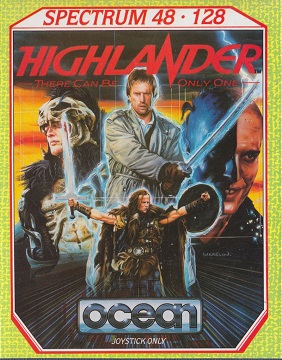
Highlander is a video game tie-in to the Highlander franchise released in 1986, the same year as the film, published by Ocean Software for the ZX Spectrum, Commodore 64 and Amstrad CPC home computers. Highlander was panned by reviewers.

Aliens is a 1990 run and gun video game developed and published for arcades by Konami. It is based on the 1986 film of the same title. Two players can play the game cooperatively in addition to single-player.

Blade Runner is a video game loosely inspired by the 1982 film Blade Runner, but is technically based on the film soundtrack by Vangelis as the publishers were unable to obtain a licence for a film tie-in. The game was published in 1985 by CRL Group PLC for Commodore 64, ZX Spectrum, and Amstrad CPC. Reviews of the game were mostly negative.

Barbarian II: The Dungeon of Drax is a video game first published in 1988 for various home computers. It was released as Axe of Rage in North America. The game is the sequel to Barbarian: The Ultimate Warrior, which was published in 1987. In Barbarian II, the player controls a princess or barbarian character, exploring the game world to locate and defeat an evil wizard. The game's plot is an extension of its predecessor, although the gameplay is different. While the first game offers two players the opportunity for virtual head-to-head combat, the second is a single-player beat 'em up with fewer fighting moves. It uses a flip-screen style instead of scrolling.
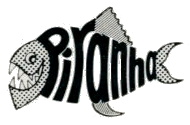
Piranha Software was a short-lived video game publishing label created by Macmillan Publishers in 1986 and closed eighteen months later. In that time it gained a reputation for its unusual output from well known developers such as Don Priestley, Design Design and Delta 4. The majority of their games featured licensed properties including the first video game based on the Discworld novels and two games based on the animated television series The Trap Door.

Short Circuit is a video game based on the 1986 film of the same name. It was developed and published by British company Ocean Software, and was released in Europe in 1987, for Amstrad CPC, Commodore 64 (C64), and ZX Spectrum. It was published again in 1989 as a budget re-release.
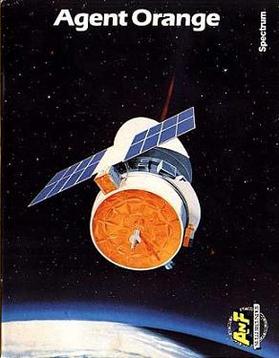
Agent Orange is an action video game released by A&F Software in January 1987 for the Amstrad CPC, Commodore 64, and ZX Spectrum.

Switchblade is a 1989 side-scrolling action-platform run and gun video game originally developed by Core Design and published by Gremlin Graphics in Europe for the Atari ST home computers. The first installment in the eponymous two-part series, the game is set in a dystopian future where players assume the role of Hiro from the Blade Knights as he embarks on a journey to defeat Havok, the main antagonist who broke free from his imprisonment after the sacred Fireblade was shattered into several pieces. Its gameplay consists of run and gun action mixed with platforming and exploration elements, with a main single-button configuration.
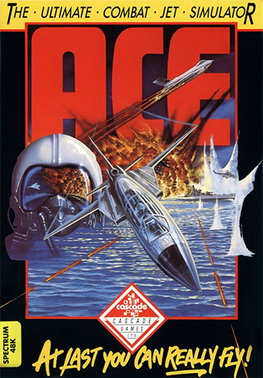
Ace is a combat flight simulator video game published for the Commodore 64, VIC-20, and Plus/4 in 1985 by Cascade Games. It was ported to the Amstrad CPC, Amstrad PCW, Amiga, and ZX Spectrum.

Friday the 13th: The Computer Game is the first game adaptation based on the films of the same name. It was released in 1986 by Domark for the Amstrad CPC, Commodore 64, and ZX Spectrum. The game was released on floppy diskette and cassette tape. The player's goal is to find and kill Jason, while making sure their friends or they themselves are not killed by Jason.

Nosferatu the Vampyre is an action game based on the film of the same name and runs on the Amstrad CPC, Commodore 64 and ZX Spectrum computers. It was developed by Design Design and published by Piranha Software in 1986.

P-47: The Phantom Fighter is a 1988 horizontally scrolling shooter arcade video game originally developed by NMK and published by Jaleco. Set during World War II, players control a Republic P-47 Thunderbolt fighter aircraft to face against the Nazis, who are occupying multiple countries around the world. Its gameplay involves destroying waves of enemies, picking up power-ups and new weapons, and destroying bosses. It ran on the Mega System 1 hardware.





















